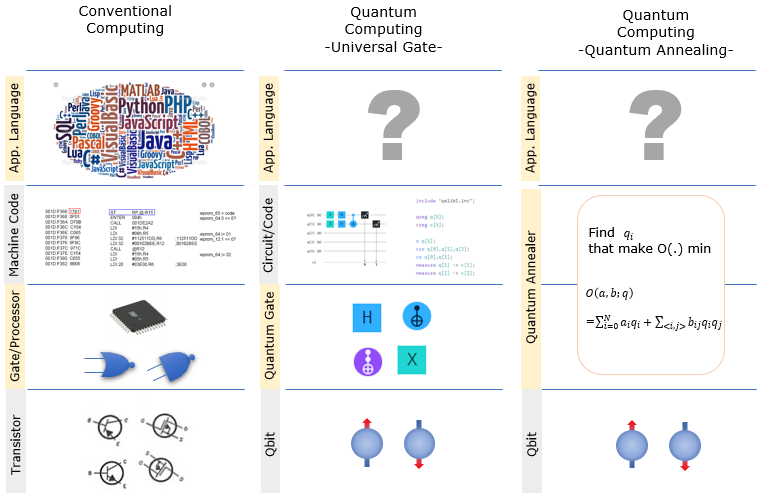|
|
||
|
By Framework I mean "Overall architecture from the very bottom hardware up to high level application programming language". To make this clearer, let me describe the conventional computing framework in my way (Of course, this is not my unique idea and is well known). As shown in the following figure. At the very bottom, there is the most fundamental electronic component called transister which is mostly in the area of physics. At next layer, a lot of electric engineers and physicists are building varios gates and based on those gates various processors and memories are built. Theoretically once we have memory and processor, we are all ready with build any program following the logic of Turing machine. On top of the hardware, fundamental software is implemented. This level of software is mainly machine language or assembly language. On top of these fundamental language, high level application languages (like C, C++, Java etc) are built.
ComparisonUniversal Gate Mode would support more generic algorithms meaning that you may be able to solve more generic problem and this may be closer to the type of Quantum Computer that we eventually want to get. But usually Quatum Computer based on this model is implemented by very microscopic scale like an atomic level. It seems that the technology seems to be pretty mature to control each atomic level Qubit and maintain the status of those qubit for reasonably long period of time. But as the number of Qubit increases it gets harder and harder to build a control system to control all of those qubits as wanted and minimize the interference between those qubits and between qubits and external control circuits. As far as I googled as I am writing (Feb 2020), the largest Qbit from IBM seems to be 53. Quatum Annelaing Model would solve only a specific form of problem. D-Wave system which is implemented based on this model implmented Qubits in macro scale which made it easier to build control system easier comparing to atomic level qubits. Partially due to this fact, D-Wave manages to implement a system with uncomparably large number of qubits. As of now (Feb 2020), the largest Qubit for D-Wave seems to be 2048(D-Wave 2000Q) and this number would become over 5000(Advantage) in mid 2020.
|
||
